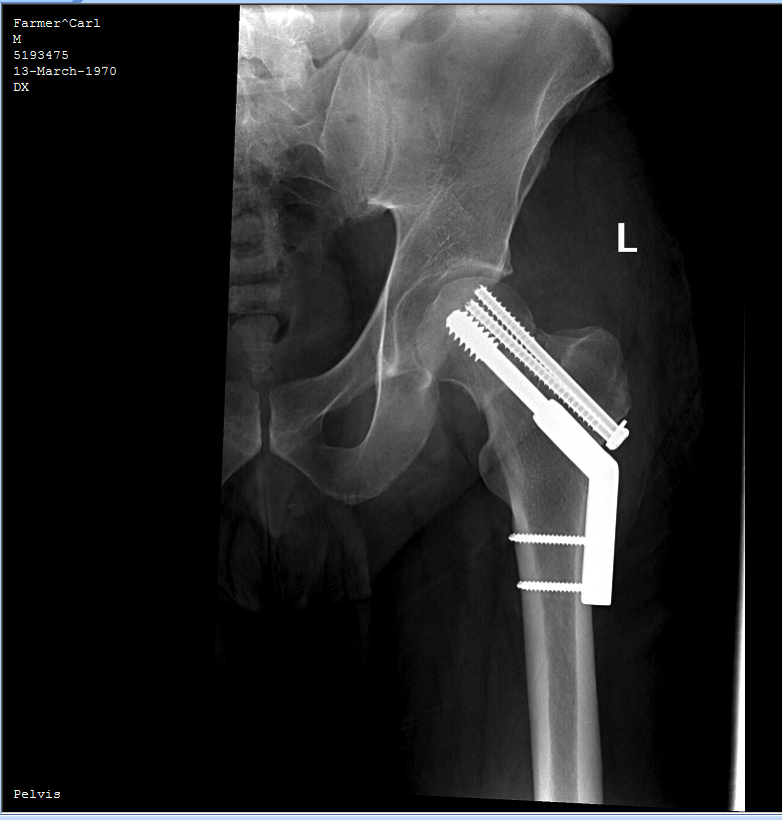The Soviets bugged typewriters in US Embassy from 1976 until 1984.
I sorta hope this crops up in The Americans.

The Soviets bugged typewriters in US Embassy from 1976 until 1984.
I sorta hope this crops up in The Americans.
They’re surreptitiously tracking everything you watch.
Matt Taibbi: Sandra Bland Was Murdered:
So news broke yesterday that authorities in Waller County, Texas, have “full faith” that Sandra Bland committed suicide. They said there was “no evidence of a struggle” on the body of the 28-year-old African-American woman who was ludicrously jailed last week after an alleged lane change violation.
In related news, the Texas Department of Safety ruled that Brian Encina, the officer who arrested Bland, pulled her from her car, and threatened her with a Taser, had merely violated the state’s “courtesy policy.” The state said there was “no evidence” yet of criminal behavior on Encina’s part.
So barring something unexpected, we know now how this is going to play out in the media.
Many news outlets are going to engage in an indirect version of the usual blame-the-victim game by emphasizing the autopsy finding of suicide, questioning Bland’s mental health history, and by highlighting the reports of marijuana found in her system.
Beyond that, we can expect a slew of chin-scratching “legal analyses” concluding that while there may have been some minor impropriety on officer Encina’s part, the law governing police-motorist encounters is too “complicated” to make this anything more than a tragic accident.
Media scandals are like criminal trials. They’re about assigning blame. Because Bland may have technically taken her own life, the blame is now mostly going to fall on a woman with a history of depression and drugs, instead of on a criminal justice system that morally, if not legally, surely murdered Sandra Bland.
And this:
But nobody yet has dared to say Sandra Bland would still be alive today, if only she’d used her blinker. That’s a bridge too far even for TownHall.com types.
Suddenly even hardcore law-and-order enthusiasts are realizing the criminal code is so broad and littered with so many tiny technical prohibitions that a determined enough police officer can stop and/or arrest pretty much anybody at any time.
Bland was on her way to a new job at Prairie A&M university when she was pulled over for failing to signal when changing lanes, something roughly 100 percent of American drivers do on a regular basis. Irritated at being stopped, she was curt with Encina when he wrote her up. He didn’t like her attitude and decided to flex his muscles a little, asking her to put out her cigarette.
She balked, and that’s when things went sideways. Encina demanded that she get out of the car, reached for his Taser, said, “I’ll light you up,” and eventually threw her in jail.
Many editorialists following this narrative case suddenly noticed, as if for the first time, how much mischief can arise from the fact that a person may be arrested at any time for “failing to obey a lawful order,” which in the heat of the moment can mean just about anything.
If a cop wants to arrest you, he can arrest you. And very, very bad things can happen to you for which no one will ever be held accountable until and unless we drastically reform the way we police our society.
In this episode of Harry’s Garage, he’ll tell you. The video is long — 30 minutes — but you’ll want to make time.
tl;dr? It’s fucking awesome. Fun fact: they’re tiny, far smaller than you probably think. At only 4.1 meters, they’re shorter than either a Cayman or a Boxster. Despite that, they hold over 30 gallons of fuel.
Ho. Lee. Fuck.
Longtime readers may recall the trouble I had with a Garmin bike GPS device last summer and fall. They could not get me a model 510 that worked for love or money — Bluetooth connectivity (and thus LiveTrack) never worked reliably, and (worse) the device would sometimes just plain eat data. On two such occasions, it did so on rides I was doing out of town in novel places, where I couldn’t easily duplicate the track. Well done, jackasses!
Anyway, they sorta-fixed it by agreeing to let me swap the 4th or 5th 510 for the next model up, and since then it’s worked better. Bluetooth still only works about 80% of the time, but at least it’s not eating data. I declared victory.
However, as it turns out, Garmin’s aggressive Suck program has other areas of focus, too!
Bike computers of all types generally use a wheel sensor to track speed. You tell the computer how big your wheel is, and the sensor tracks rotations, which gives you pretty accurate speed and distance readings. (GPS devices can work without these with a loss of accuracy, but since they’re easy to use there’s little reason not to use them.)
If you’re really paying attention to training, then you probably also want a cadence sensor, which tells you how many revolutions your feet are making every minute. Typically, you want to pedal faster instead of mashing harder — you’ll be more efficient that way, and get a more aerobic workout.
Traditionally, both speed and cadence sensors have used a pair of magnets to capture data: one affixed to the bike frame, and another affixed to the thing that goes around. For speed, you usually see it on the front fork with the companion magnet affixed to a spoke. For cadence, you get magnets on the chainstay and crank arm on the non-drivetrain side. (Most of the time these days, the sensors require no wires to communicate with the head unit.)
I have sensors like this on my older bike. It’s obviously somewhat fiddly and visually cluttered, but they work fine.
A year or so ago, we started to see more clever sensors for both things. Garmin has a pair that attach only at single points, and require no magnet alignment: the speed sensor attaches to the hub of one of your wheels, and the cadence sensor attaches to a crank arm. Both sense motion itself, not magnetic field flux. They’re much less fiddly (nothing to keep aligned) and are drastically more visually appealing on the bike. I chose those for the new bike last fall. So far, they’ve worked fine, too — with one exception I encountered last week.
The cadence sensor is a little thin pod about the size of two quarters that you attach to the interior of your crank arm using one of three supplied (but proprietary) rubber bands. I say they include three, but they’re in three sizes, so you only get one that will actually work with your bike.
I was a little dubious of this choice on installation, and it turns out I had good reason. Last Tuesday I noticed that the band on mine was partly broken. They get credit for using a design wherein a single break won’t allow the sensor to fall off, but that’s where credit stops.
You see, you can’t just go to the Garmin web store (or your favorite retailer) and buy a pack of replacement bands. They’re nowhere. I opened a support ticket about this last night; here’s what I got back:
Thank you for contacting Garmin International.
I would be happy to assist you.
The replacement straps aren’t available through our website, but we do have them available for sale through the number below. A set of three straps is $10 plus shipping and any applicable sales tax. Please call us at the number below to place your order as we are unable to take payment information over email.
Now, note that he says “set of three.” That sounds reasonable at first, but it turns out they mean “one each of three different sizes.” In other words, they’re asking you to spend ten bucks for a single goddamn rubber band when the first one didn’t even last a year.
When I pointed this out somewhat firmly, the dude I got on the phone offered to send me a set (again, of which two are useless) gratis, which arrived on Saturday.
What’s the over/under on how many times I can shame them into replacing the band for free?
Fancy a game of Loop? it’s played on an elliptical table. (via MeFi.)
(It’s got its own site as well.)
This article is completely brilliant. Read it.
The Slow-Mo Guys got one of those enormous water balloons. One of them got in it, and then they filled it up until it popped.
So the last year has, for me, been kind of up and down.
Last summer I got very serious about cycling for the first time, really in response to having entered MS150 training season out of shape despite the gains of the previous year. I decided that wouldn’t happen again, so I kept riding — an average of 100 miles per week from just before the 150 until the third week in November. It’s higher if I grant myself weather or travel related mulligans, even.
Then, of course, that came to a grinding halt when I broke my hip in November. That was a pretty discouraging turn of events, to say the least. The medical saga that followed was a serious pain in the ass; I don’t want to make too much of it, since so many other folks have so much worse tales of woe, but spending 10 days in the hospital sucks for anybody. Needing PICC line to quash a post-op infection sucks for anybody. And obviously not being able to put any weight on your leg for three months sucks OUT LOUD for anybody.
The infection got its ass kicked, though. My wounds healed. I got cleared for weight and PT again in February, right on schedule. I started riding again a month later, slow and tentative at first, but regularly.
I got faster, again. I got stronger, again. Part of this was frustrating, because I could remember how strong I had been in the fall, but the other side of starting over is that you get to re-do the part with the most dramatic gains.
I’m still not quite what I was in every way, but I can see it from here.
So here is this, now: the point of this post, in two pictures.
Exhibit A, or, Chet Has Internal Jewelry Now:

Exhibit B, or, How Chet Spent His Sunday:
I did this same ride last summer — The Katy Flatland Century — as I was approaching Peak (pre-wreck) Chet. I was very slightly faster yesterday than I was last summer.
The other punchline is this: I rode 109.2 miles in the week ending yesterday. That’s my first hundred mile week since November 9.
If I’m honest, I admit that two factors actually erase the speed difference, or even put yesterday behind my achievement last year.
First, I rode with part of my team yesterday, in a paceline, taking turns at the front; last summer, I was alone.
Second, last year I was riding my 30 pound Surly; this time, I was on 18 pounds of carbon designed for go-fast behavior.
It’s not just about the number, though. It’s about going through something and coming out on the other side, just about 8 months later. It’s about regaining this level of fitness, even if it’s not where I was at my peak (yet!). It’s about getting here not on your own, because that’s impossible; it’s about getting here with the support of your friends, your family, and the professionals who put me back together and showed me how to get strong again.
And most of all it’s about being married to my best friend, without whom absolutely none of this would have happened.
On this day in 1937, the patron saint of Heathen worldwide was born. Happy 78th, Hunter. We’re poorer without you.

Three score and ten years ago today, on July 16, 1945: “I am become death, the destroyer of worlds.”

I didn’t realize until this morning how short the timeline was. Only three weeks separate the Trinity test from Enola Gay‘s trip to Hiroshima on August 6, and Bockscar‘s trip to Nakasaki on August 9.
Josh Marshall has you covered, at least until more is known.
This paragraph says volumes, imo, about the nature of right-wing objections:
There’s a lot of Iran pony thinking going on about what would be cool if we could have everything we want. But as much as I fear what a Republican president might do on the Iran front, I think going to war with Iran is highly unlikely. Stiffening sanctions won’t happen because even if we stiffened sanctions, Europe and Russia and China won’t. So all the folks saying it’s not good enough or it’s a disaster or whatever else are basically saying we should hang tough and let the Iranians do whatever they want. Indeed, adopt a maximal line of confrontation short of war, which will empower hardliners and make it more likely the Iranians will take the step from being a nuclear threshold state to an actual nuclear weapons state. It is the elevation of self-satisfaction over tangible results and reality.
Remember that the Republicans whining about this deal would likely whine about ANY deal with Iran that didn’t include the enthusiastic religious conversion of every single man, woman, and child in Iran to Presbyterianism. They’re incapable of looking at anything generated by this Administration and not dismissing it as un-American, anti-Christian, and possibly socialist, even when the plan in question was written by Republicans in the first place, so it’s not as though these people are arguing in good faith.
Where were YOU thirty years ago today? And, more importantly, what were you listening to?
There is only one acceptable answer, assuming you were alive to do it: July 13, 1985 was the date of the only dual-continent concert I’m aware of: Live Aid. From Wikipedia:
Live Aid was a dual-venue concert held on 13 July 1985. The event was organised by Bob Geldof and Midge Ure to raise funds for relief of the ongoing Ethiopian famine. Billed as the “global jukebox”, the event was held simultaneously at Wembley Stadium in London, England, United Kingdom (attended by 72,000 people) and John F. Kennedy Stadium in Philadelphia, Pennsylvania, United States (attended by about 100,000 people). On the same day, concerts inspired by the initiative happened in other countries, such as Australia and Germany. It was one of the largest-scale satellite link-ups and television broadcasts of all time: an estimated global audience of 1.9 billion, across 150 nations, watched the live broadcast.
Who played? Well , just in case you can’t recall, here’s a partial list:
Wembley:
JFK:
In this era of endless reunions, it’s probably hard to grasp how amazing that last part is; to my knowledge, Page, Plant, and Jones hadn’t shared a stage since Bonham’s death five years before. Zeppelin were just over. And then, here there they were.
Obviously, lots of amazing things happened at Wembley and and JFK — not the least of which is Phil Collins’ famous status as the only guy to play both venues, courtesy of the Concorde — but thirty years of discussion have led us to the inescapable conclusion that Queen turned in not just the best set of the day, but maybe the best set of rock and roll ever played on any stage.
Sadly, there actually aren’t any complete recordings of the whole affair — partly by design, actually. Queen were somewhat unique in that they captured their whole set, and later had it remastered in 5.1 for inclusion on their Queen Rock Montreal BluRay, which is well worth your time even if you’re only a casual Queen fan.
Trust me. This is worth your time.
He, of course, being Elvis.
On Twitter, author Lawrence Wright (The Looming Tower, Going Clear, etc.) calls our attention to this brief, brilliant performance of “Unchained Melody” apparently from a show at the Pershing Municipal Auditorium in Lincoln, Nebraska, on June 20, 1977.
Less than two months later, Presley was dead. Contrary to his commentary in the clip, the title of the upcoming album would be Moody Blue when it dropped in July of that year. Here at Heathen World HQ, we have a copy on vinyl.
Blue vinyl. Because 1977, obviously.
There is, apparently, still an enormous pile of snow in Boston, owing to their apocalyptic winter.
It is July.
Damn.